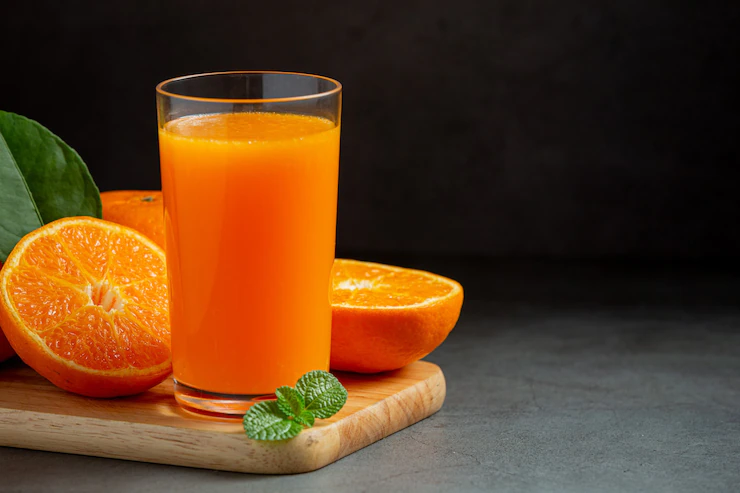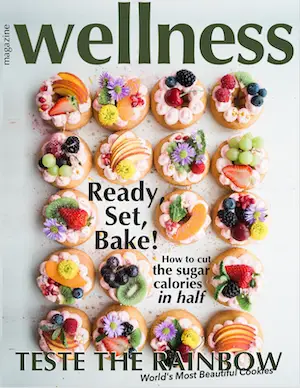Drinking 100 % Fruit Juice is Associated With Improved Nutrient Intake in Children and Adolescents. New research shows those who drink 100 percent juice have higher intakes of key nutrients compared to non-consumers.

Consumption of 100 percent fruit juice is closely linked to improved nutrient adequacy among 2-18 years old’s, according to new research published in the March online issue of Public Health Nutrition, the Juice Products Association reported.
The new study from researchers at the Louisiana State University Agricultural Center and Baylor College of Medicine highlights the effect that consumption of fruit juice had on select nutrients (ones that have been identified as “nutrients of concern” and are most frequently under-consumed in children’s diets), namely: dietary fiber; vitamins A, C, and E; magnesium; folate; phosphorus; calcium; and potassium.
According to the findings, with the exception of vitamin E and fiber, consumption of 100 percent juice was associated with higher usual intakes of all of the aforementioned nutrients. (Of note, although juice drinkers did not exhibit higher intakes of dietary fiber, their fiber intake was not lower than no consumers, as experts have previously speculated may occur). These results underscore the role of 100 percent juice as a nutrient-dense beverage – a classification also noted in the 2010 Dietary Guidelines for Americans.
“One hundred percent fruit juice plays an important role in the diets of children and teens, supplying important nutrients during crucial years for growth and development,” notes lead researcher Dr. Carol O’Neil. “Drinking 100 percent juice should be encouraged as part of an overall balanced diet.”
Additionally, this study is the first to show that fruit juice consumers were more likely to exceed the Adequate Intake for calcium than those not consuming juice. It is unclear if this is due to the intake of calcium-fortified juices or if fruit juice was more likely to be consumed alongside calcium-rich foods and beverages.
In this study, the researchers used data from the 2003-2006 National Health and Nutrition Examination Survey (NHANES) to examine the diets of a nationally representative sample of children and adolescents ages 2-18 years.
DID YOU KNOW?
The National Cancer Institutes’ attempts to promote the health benefits of fruits and vegetables have only affected a relatively small segment of society. But, as more and more is written about the long-term health benefits of fruits and vegetables, as increasing numbers of people learn about the possibility of preventing and curing cancer, heart disease, arthritis, and a host of other diseases by making dietary changes, the fruit and vegetable trend and the popularity of juicing will continue to grow.
How much juice is healthy for adults to consume?
For adults, the US Department of Agriculture, in its 2010 Dietary Guidelines for Americans, recommends a daily serving of up to 2 cups of fruit daily and up to 1.5 cups daily for children. In its MyPlate dietary guidelines, the USDA states that any fruit or 100% fruit juice counts as part of the Fruit Group. A one-half-cup serving (4 ounces) of 100% fruit juice provides the equivalent of one-half cup of fruit to help meet USDA’s daily serving recommendation.
How much juice should children drink?
The American Academy of Pediatrics (AAP) has established recommended maximum daily consumption levels of 100% fruit juice for children. The AAP suggests 4 to 6 ounces of 100% fruit juice per day for children ages one to six years old and up to 12 ounces per day for children ages 7 to 18 years of age. The juice industry endorses these recommendations.
REASON TO JUICE
The National Cancer Institute began a campaign to get people to do one simple thing – EAT MORE FRUITS AND VEGETABLES. Specifically, the recommendation was to eat five servings of fruit and three servings of vegetables a day, and their reasoning was simple: a diet high in fruits and vegetables will prevent or cure a wide range of ailments, and improve our health.
There are three main reasons why you will want to consider everyday juicing:
- Juicing helps you absorb all the nutrients from the fruits & vegetables. Juicing will help to “pre-digest” them for you, so you will receive most of the nutrition.
- Juicing allows you to consume an optimal amount of fruits & vegetables. Some people may find eating that many vegetables difficult, but it can be easily accomplished with a quick glass of vegetable & fruit juice.
- You can add a wider variety of fruits & vegetables to your diet. With juicing, you can juice a wide variety of fruits and vegetables that you may not normally enjoy eating whole. Go for variety and color, and make sure that you eat dark green and orange choices.
*The information available on ewellnessmag.com, including text, graphics, and other materials are for informational purposes only. Reliance on any information in ewellnessmag.com is at the user’s own risk. Sponsored product placement may appear in the article. The visitor of this website acknowledges that the information available on or through ewellnessmag.com is not and is not intended to be a substitute for professional medical advice. Copyright © 2022 Brawo Press, Inc. All rights reserved.




